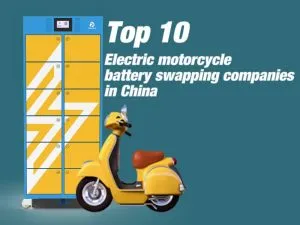AGM motorcycle battery - is it worthwhile to choose?
AGM motorcycle battery is a typical style of motorcycle battery. It is an advanced type of lead-acid battery with better functionality, toughness, and battery life. Still, you wonder if this is the best battery type to choose than lithium ion when looking to buy a motorcycle battery.
In this article, we will examine and review the operation of the AGM motorcycle battery, including its pros and drawbacks. Let’s read and explore the AGM motorcycle battery.

What is an AGM motorcycle battery?
An AGM motorcycle battery is a family of lead-acid batteries.Actually, the term “AGM” is a short abbreviation for “Absorbed Glass Mat,” which signifies the existence of glass mats that absorb acid inside the battery. Unlike other lead-acid batteries, the glass mats help prevent spills, leaks, and drying out.
AGM batteries outperform its prototype versions and other traditional batteries when we compare them in terms of their durability, how they resist vibration and stress, as well as deal with temperature changes.
In addition, they are referred to as maintenance-free batteries because you won’t need to regularly add acid or check the water level.
How does an AGM motorcycle battery work?
How an AGM motorcycle battery works is based on fairly simple chemistry, with glass mats absorbing the electrolyte (a sulfuric acid and water solution). The battery holds the electrolyte in a stable position and works by letting it flow through the thin glass mats.
The glass mats provide a vast surface area for the electrolyte to contact the lead plates (positive and negative) without overloading the battery with excess liquid.
When you are in the usage phase of an AGM motorcycle battery, acid molecules flow from the electrolyte to the lead plates, leaving water and lead sulfate behind. In this process, known as discharging, an electric current that powers the bike or motorcycle.
Electricity passes through the lead plates of AGM motorcycle battery during charging, which has the reverse effect of turning the water and lead sulfate back into acid. This restores the battery’s capacity and voltage in a process called recharging.
Regardless of the usage phases (charging or discharging), AGM batteries also have a valve that lets some gases escape but stops the electrolyte from leaking or spilling, making the battery safer and more durable than traditional lead-acid batteries.
Advantages and disadvantages of an AGM motorcycle battery
Pros:
- Spill-proof and leak-proof: AGM batteries are spill- and leak-proof thanks to glass mats that soak up the electrolyte (a mixture of sulfuric acid and water). By preventing electrolyte leakage or spillage, this feature makes the battery safer for use on a motorcycle.
- High-power output: An AGM motorcycle battery can deliver high-current loads quickly compare to traditional batteries. This is because the design has minimal internal resistance due to the large surface area the glass mats create for the electrolyte to react with the lead plates (the cathode and anode of the battery).
- Longer lifespan: AGM batteries have a longer cycle life than traditional lead acid batteries.
- Durable: AGM batteries are more robust with the construction, which lets them handle vibrations, shocks. This is one of the reasons which allows them to survive longer.
Cons:
- Sensitive to overcharging: When choosing an AGM motorbike battery, you should be aware of its sensitivity. AGM batteries barely tolerate overcharging and high voltages; you can harm the battery plates by overcharging, and gas accumulation may result in swelling, breaking, or explosion.
- More expensive: It is more expensive because it costs more to make an AGM motorcycle battery than a conventional lead-acid battery. Additionally, it has a lower specific energy output, indicating that it contains less energy per unit weight.
Although AGM batteries have the above advantages and are one of the most common batteries, they are still inferior to lithium-ion batteries in terms of some important performances. The next part of this article will compare the two.
AGM motorcycle battery vs lithium motorcycle battery
An AGM motorcycle battery and a lithium motorcycle battery are the two most common batteries used to power a bike.
You should take into account performance, weight, safety, and maintenance when selecting a battery for your motorcycle, among other things. Here are some points to discuss and compare them:
Cost
In terms of initial cost, an AGM motorbike battery is less expensive than a lithium battery. In most cases, a lithium motorbike battery is frequently twice the price of an AGM motorcycle battery.
Still, a lithium motorbike battery can end up being less expensive over time than an AGM battery. This is due to the fact that a lithium motorcycle battery outlasts an AGM motorcycle battery in terms of lifespan, self-discharge rate, and depth of depletion.
Energy density
The energy density of a battery indicates how much power it can store based on weight or volume. It affects the battery’s cost, capacity, weight, and performance.
AGM motorcycle batteries are less energy dense than lithium motorcycle batteries because of their chemistry and structure. As a result, a lithium battery is lighter and can store more energy.
Recently, the energy density of a lithium battery ranges between 200 to 300 Wh/kg. In comparison, an AGM battery of the same size can have energy densities between 25 and 30 Wh/kg. Thus, it should be noted that for the same size, a lithium battery can have an energy density 10 times greater than an AGM battery.
Weight
The effects of weight on a motorcycle’s performance, handling, and fuel economy are all noticeable. Using a lighter battery can help your bike get lighter as well as improve its acceleration and agility.
Because lithium batteries contain more energy and they are light. AGM batteries can weigh up to four folds more than lithium batteries of the same capacity.
For a 100Ah 12v lithium battery, the weight may be around 12.5 kg, whereas a 12v 165 Ah AGM battery can weigh around 35 kg. This indicates that, while using more power, a lithium battery may be up to 65% lighter than an AGM battery.
Which last longer?AGM or lithium motorcycle battery?
A battery lifespan is how long it can power your bike before you need to replace it.
The lifespan may depend on various factors, including how frequently it is used. The maintenance put in place for the battery and how well it is stored are other factors that affect how long it will last.
On the premise of one charge/discharge cycle per day, a lithium battery may last up to ten years. An AGM battery doesn’t last up to that, because it lasts one to three or four years if properly maintained.
A lithium battery beats an AGM battery in how long it lasts because it doesn’t lose much charge while you’re not using it, thanks to its low self-discharge rate.
Difference to maintain lithium and AGM motorcycle battery
- Storage Charge:
AGM batteries, however, go much beyond this, while lithium batteries only self-discharge at a rate of 3.5% per month. AGM batteries therefore require more energy to detect battery power and restore power when necessary.
Lithium batteries essentially only need to keep the power at 20% to 80%, whereas AGM batteries may initially seem to be completely charged but eventually run out of power.
- Voltage checking:
A quick and efficient technique to assess a battery’s health is to check its voltage. The fully charged voltage of lithium and AGM batteries is one of their main variances.
Llifepo4 cells that are completely charged normally at 3.65V. Accordingly, a 12V lifepo4 battery would have a voltage of 14.6V when fully charged. A 12V AGM battery, on the other hand, would be 13.8V when fully charged.
- Sulfation prevention:
Sulfation is a common cause of battery failure in lead-acid batteries, including AGM batteries, and maintaining a battery involves preventing this issue.
AGM batteries need to be recharged at least once every four to six months while they are not in use to avoid sulfation. Sulfation does not affect lithium batteries and requires no special treatment to prevent it.
Which can be charged more quickly? AGM or lithium motorbike battery?
Based on the differing chemical components employed, lithium batteries offer a higher charging efficiency than AGM batteries. In the course of a chemical reaction, lithium ions are more active and effective.
What’s more, lithium batteries have a lower internal resistance than AGM batteries. This means that when charging, less energy is lost as heat, resulting in a more efficient charging process and faster charging times.
Finally, AGM batteries have a higher risk of sulfation, which occurs when the battery is not fully charged or discharged. This can lead to reduced capacity and slower charging times. Lithium batteries, on the other hand, do not suffer from sulfation, allowing them to maintain their capacity and charge faster.
Conclusion
An AGM motorcycle battery is a good option for riders looking for a reasonably priced battery. However, lithium motorcycle battery is more ideal if you want one that combines safety and high performance with durability for your motorcycle.































